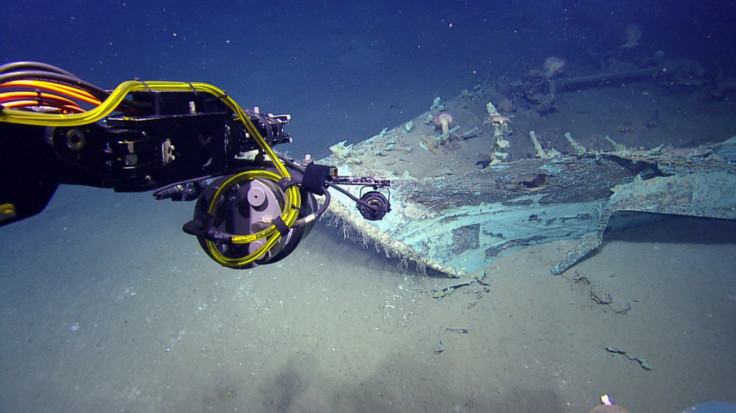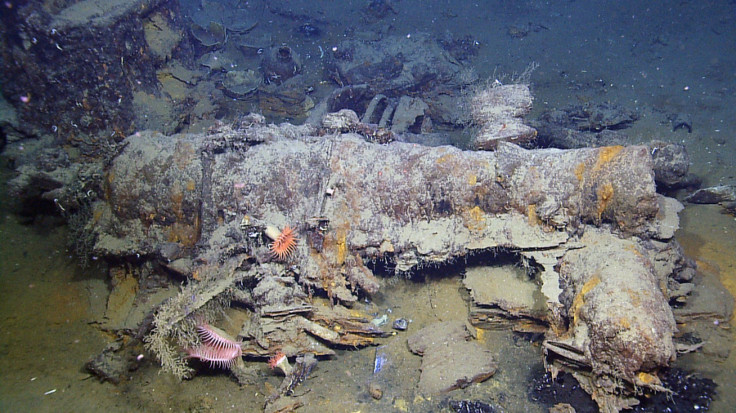Monterrey Shipwreck: A 200-Year-Old Shipwreck Site Is Actually The Location Of Three Different Wrecks [PHOTOS]
Archaeologists excavating the site of a 19th century shipwreck discovered the location off the Gulf of Mexico was actually home to three shipwrecks. The team has been unable to determine the country of origin for the three ships, but they believe the vessels were sunk at the same time by a severe storm.

The team of marine archaeologists from the Texas State University in San Marcos was excavating the site of a shipwreck off the coast of Texas when they discovered a near-complete ship that sank close to 200 years ago. The researchers were diving to depths of 4,300 feet to explore the shipwreck when they discovered there were multiple ships at the site.
The main shipwreck being investigated had a wood-and-copper hull that measured 86 feet long by 26 feet wide, Texas State University said in a statement. Preliminary investigations into the site found evidence of two masts and further excavations revealed the ship’s navigation systems, cookware used by the crew and artillery. The site was first discovered by the Okeanos Explorer, a National Oceanic and Atmospheric Administration ship.
Lead investigator Frederick Hanselmann said the team traveled 170 miles from the Texas coast to explore the shipwreck and will spend the next few days conducting a thorough excavation of the site. “We will spend five days conducting operations around the clock to map and document the wreck in exacting detail, to excavate target areas of artifacts, and bring them to the surface for in-depth study that will provide diagnostic information and allow us to discover the vessel’s age, function, nationality, and identity,” Hanselmann said.
The team’s efforts have already discovered plenty of information about the ship’s crew and what life was like on the ship in the 19th century. “We recovered an octant, liquor bottles, a ceramic jar called a 'cantaro' used in the Yucatan, possible Spanish majolica, a decanter, a demijohn, and other miscellaneous ceramics and bottles,” Hanselmann said. The team is planning to recover weapons including muskets and swords that belonged to the crew.

While an extremely well-persevered shipwreck was enough cause for excitement, the team announced during a press conference held on July 25 that there was evidence of two more shipwrecks near the main excavation site. This is the deepest shipwreck yet explored by researchers in the Gulf of Mexico or America, the Associated Press reports.
Speaking at the press conference, the team described the unique nature of the shipwrecks, noting the different countries of origin of the collected artifacts. Some of the ceramics were Mexican in origin while a Canadian musket was also recovered from the shipwreck, AP said. The three ships were within a five mile area.
Hanselmann and his team speculate that the two ships were privateers, mercenary ships hired by different countries, trying to seize the valuable cargo of the third ship, notes AP. The shipwrecks, believed to have gone down in the early 1800’s, also represented a tumultuous time for exploration. Director of the Maritime Heritage Program for NOAA Jim Delgado said, “Empires were falling, Spain was losing its grip, France was selling what it has, Mexico becomes independent, Texas independent, Latin America becomes independent and the U.S. is beginning to make a foothold in the Gulf.”
Hanselmann and his team plans to return to the Monterrey Shipwreck, the name they gave the location, next year. The artifacts already collected are being sent to Texas A&M to be preserved, AP reports. The marine archaeologists have to get permission to explore the two other shipwrecks prior to any excavation or recovery effort. After the press conference, the marine archaeologists said that they will examine the photos of the main shipwreck to learn more about the vessel.
A video of the site, courtesy of the NOAA's Okeanos Explorer, can be viewed below.
© Copyright IBTimes 2025. All rights reserved.






















